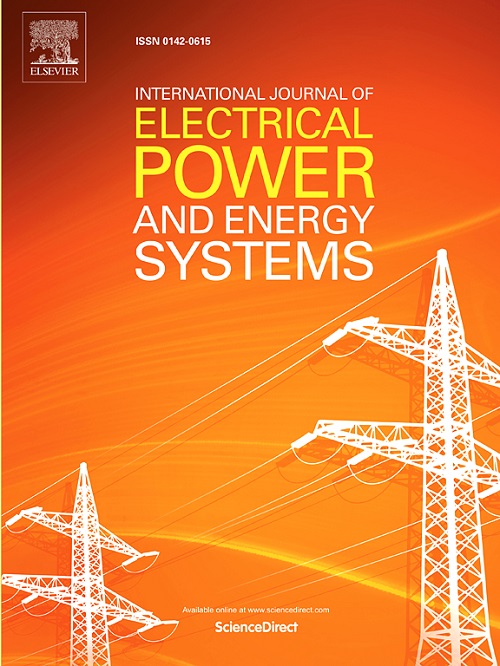Co-optimizing network investment, reconfiguration, and third-party flexibility for congestion management in active distribution networks
IF 5
2区 工程技术
Q1 ENGINEERING, ELECTRICAL & ELECTRONIC
International Journal of Electrical Power & Energy Systems
Pub Date : 2025-09-11
DOI:10.1016/j.ijepes.2025.111094
引用次数: 0
Abstract
This paper introduces a unified optimization model to evaluate three coordinated strategies for congestion management in distribution networks: investment in new assets, distribution network reconfiguration, and the procurement of third-party flexibility. Unlike existing models that consider these strategies in isolation, the proposed approach jointly optimizes capital and operational expenditures, explicitly capturing their trade-offs. This integrated perspective aligns with evolving regulatory frameworks that advocate for the coordination of conventional planning with operational and market-based flexibility. The model is applied across a range of scenarios, including load growth, varying flexibility capacities and costs, and different weightings of representative days.
Results indicate that reconfiguration alone may suffice under moderate demand growth, while greater availability of third-party flexibility can defer or substitute costly grid reinforcements. Under higher congestion conditions, the coordinated deployment of all three strategies delivers the most cost-effective and operationally robust outcomes. The analysis further reveals that grid reconfiguration dynamically alters the eligibility of service providers to deliver flexibility, underscoring the importance of incorporating reconfiguration into the design of third-party flexibility mechanisms and distribution network planning. The paper concludes by identifying key implementation challenges and future research directions, including the selection and weighting of representative days, assessment of switching costs, reliability of reconfigured topologies, uncertainty modeling, and the implications of coordinating multiple flexibility mechanisms for congestion management.
共同优化网络投资,重新配置,和第三方灵活性的拥塞管理在主动配电网络
本文引入了一个统一的优化模型来评估配电网中三种协调的拥堵管理策略:新资产投资、配电网重构和第三方灵活性的采购。与孤立地考虑这些战略的现有模型不同,拟议的方法联合优化资本和业务支出,明确地捕捉它们的权衡。这一综合视角与不断发展的监管框架相一致,这些框架倡导将传统规划与运营和市场灵活性相协调。该模型适用于一系列场景,包括负载增长、不同的灵活性能力和成本,以及代表天数的不同权重。结果表明,在适度的需求增长下,仅重新配置就足够了,而第三方灵活性的提高可以推迟或替代昂贵的电网加固。在拥堵程度较高的情况下,所有三种策略的协调部署可提供最具成本效益和运营稳健的结果。分析进一步表明,电网重构动态地改变了服务提供商提供灵活性的资格,强调了将重构纳入第三方灵活性机制和配电网规划设计的重要性。最后,本文确定了关键的实施挑战和未来的研究方向,包括代表性天数的选择和加权、切换成本的评估、重新配置拓扑的可靠性、不确定性建模以及协调多个灵活机制对拥塞管理的影响。
本文章由计算机程序翻译,如有差异,请以英文原文为准。
求助全文
约1分钟内获得全文
求助全文
来源期刊
CiteScore
12.10
自引率
17.30%
发文量
1022
审稿时长
51 days
期刊介绍:
The journal covers theoretical developments in electrical power and energy systems and their applications. The coverage embraces: generation and network planning; reliability; long and short term operation; expert systems; neural networks; object oriented systems; system control centres; database and information systems; stock and parameter estimation; system security and adequacy; network theory, modelling and computation; small and large system dynamics; dynamic model identification; on-line control including load and switching control; protection; distribution systems; energy economics; impact of non-conventional systems; and man-machine interfaces.
As well as original research papers, the journal publishes short contributions, book reviews and conference reports. All papers are peer-reviewed by at least two referees.

 求助内容:
求助内容: 应助结果提醒方式:
应助结果提醒方式:


